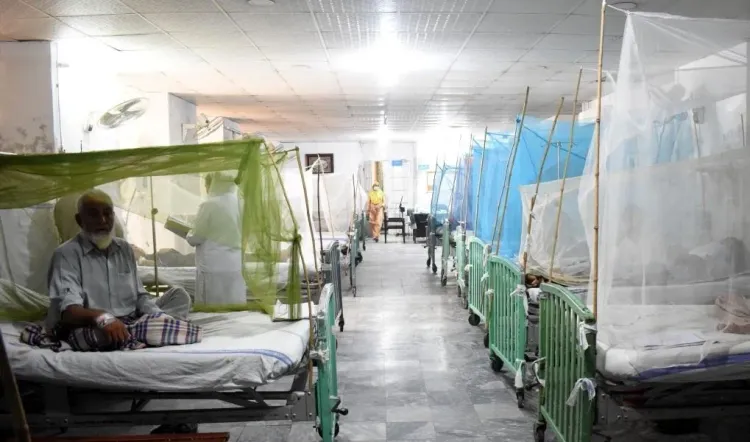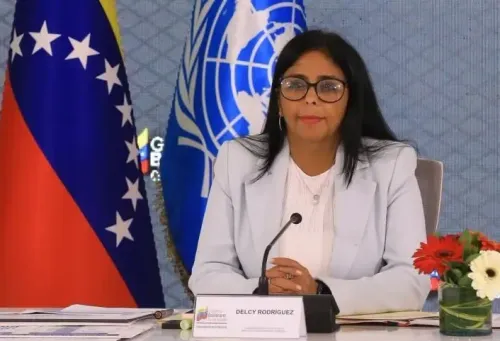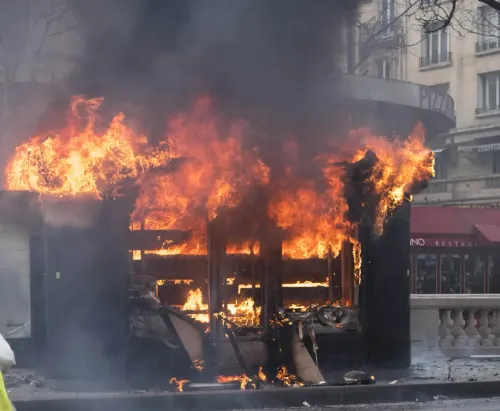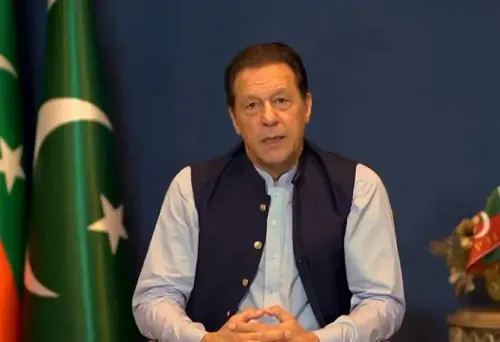What Measures Are Being Taken to Combat Rising Dengue Cases in Rawalpindi?

Synopsis
Key Takeaways
- 17 dengue cases confirmed in Rawalpindi.
- Only one patient remains hospitalized.
- District authorities are monitoring and controlling the outbreak.
- Preventive measures are crucial to avoid further spread.
- Monsoon rains contribute to the rise in dengue cases.
Islamabad, July 25 (NationPress) A notable increase in dengue-infected individuals has been observed in Rawalpindi due to ongoing heavy rains affecting various regions of Pakistan. The district authorities have initiated actions to mitigate the spread of the dengue virus following a spike in patients reported at Rawalpindi Teaching Hospital (RTH) in Raja Bazaar.
As per reports, 17 dengue cases have been confirmed in Rawalpindi, with only one patient currently hospitalized at Rawalpindi Teaching Hospital. The remaining 16 patients have been discharged post-treatment, as per the information provided by officials from the District Health Authority, according to Pakistan's prominent newspaper, Dawn.
The hospitalized individual arrived at the facility from Adiala Road, and medical professionals stated that the patient's condition is stable. However, they indicated that the patient may have contracted the virus during a visit to Murree.
Expressing concerns regarding the dengue outbreak, Deputy Commissioner Hassan Waqar Cheema issued a cautionary statement, urging residents to stay vigilant, adopt preventive measures, and acknowledge their roles in controlling the dengue virus spread. His remarks came during a meeting held in his office on Thursday.
Cheema instructed assistant commissioners to oversee the efforts of the District Health Authority and other departments in combating the further spread of dengue. He noted that the number of dengue cases has risen in Rawalpindi this week and cautioned that without preventive actions, the situation could worsen.
The health department has established a comprehensive dengue control system, with operations currently active in affected areas and households with reported dengue cases to eliminate larvae and mosquitoes.
With puddles accumulating on main roads due to the rains, the district health authority is worried about resuming fumigation in critical union councils, as dengue mosquitoes thrive in waterlogged areas. Consequently, the district administration has directed the district health authority and cantonment boards to manage rainwater drainage in their respective areas.
Amid the relentless monsoon rains hitting Pakistan, an additional eight fatalities have been reported nationwide over the past 24 hours, elevating the death toll to 266, as per the latest data from the National Disaster Management Authority (NDMA), local media sources reported on Friday.
Among the recent fatalities, Khyber-Pakhtunkhwa recorded three deaths and five injuries. Islamabad and Pakistan-occupied Gilgit-Baltistan each documented two fatalities, while another death occurred in Sindh.
Since the onset of the monsoon season in late June, a total of 266 lives have been lost, including 94 men, 46 women, and 126 children. Additionally, 628 individuals have suffered injuries in rain-related incidents, as reported by Pakistan’s leading newspaper, The Express Tribune.
Punjab province has emerged as the most severely impacted area, registering the highest casualty figures, with over 144 deaths and 488 injuries. In light of the recent catastrophic floods in Rawalpindi, the district administration has identified 19 urban areas as highly susceptible to possible flash floods.
The high-risk zones in Rawalpindi include New Katarian Lai Bridge, Bangash Colony, Ziaul Haq Colony, Boring Road, Pirwadhai Bridge, Dhoke Naju, Dhoke Dalal, Dhoke Hassu Bridge, Hazara Colony, Dhoke Ratta, Gawalmandi, Dhoke Elahi Bakhsh, Sadiqabad, Javed Colony, Nadeem Colony, Tahli Mohri, Jan Colony, Tench Bhatta Last Stop, Banaras Colony, and Sharon Colony (Sawan Camp).










